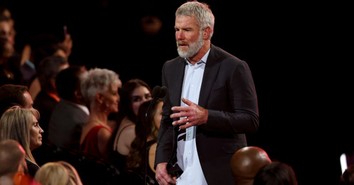Gen Z and the Future of Church Attendance: What the Numbers Really Show

It’s no secret that the pandemic altered the trajectory of the Christian church in America. Across the denominational board, churches declined in attendance and, once restrictions were lifted, many have yet to recover. Many more shuttered their doors for good. Those that went hybrid – meaning offering a robust menu of services both in person and online – did the best.

Yes, during the COVID-19 years, the rise of the nones stalled, and the hemorrhaging of the decline in the number of Christians seemed to stop, but there wasn’t a lot of the American population left to eat into to feed the ongoing rise of the nones until younger generations grew into survey age. In other words, among adults, you had almost every eligible person become a none who wanted to become a none.
The nones were not coming from the committed population of faith. They were coming from the margins, the periphery—people who were Christian, or religious, in name or background or family of origin only. You never had the nones rising from the committed population.
The larger issue is that this seeming stabilization has come at the end of years of decline.

In 2007, Pew Research Center’s first Religious Landscape Study (RLS) found that 78% of all U.S. adults identified as Christian. In 2014, the second RLS found that the number had “ticked steadily downward” to 71%. The latest RLS finds that 62% of U.S. adults now identify as Christians. As Pew reports, “That is a decline of nine percentage points since 2014, and a 16-point drop since 2007.”
The headlines you read are that the rise of the nones has stopped, or stalled, or levelled off, and that Christians are no longer in decline.
And that’s true.
For now.
The larger story is that since the RLS started tracking such things, there has been a 16% drop in the number of people who identify as Christians, and the nones have risen from around 14% or so in 2007 to now 29% in 2024. The second, more sobering headline is that Christians have declined 16% and the nones have doubled.
So, what to make of the recent reports of younger generations now making up the largest constituency attending church? A new study, part of the State of the Church research initiative from Barna Group and Gloo, found a post-pandemic surge among Gen Z churchgoers over the age of 18.
Today, when people born between 1997 and 2007 go to church, they attend, on average, about 23 services per year. Churchgoing Gen Xers, in contrast, make it to about 19 out of 52 Sundays, while Boomer and Elder churchgoers average just under 17. Millennial churchgoers, born between 1981 and 1996, attend 22 services annually, up from a previous high of 19 in 2012. The Barna study calls this a “historic” and “generational reversal.”
But in an analysis of this by Christianity Today (CT), it was noted that Barna’s research, based on 5,580 online surveys done between January and July, does not look at the overall decline of the number of people going to church in America. They note, as I have mentioned, that a recent Pew study found that just 45% of adults under 30 attend religious services—a number that has dropped nearly 20 points in 10 years.
So how to explain the young now attending?
CT notes note that it is probably that the frequency of Gen Z church attendance has increased in the last five years because less-committed, less-regular churchgoers have simply stopped going. Perhaps the ones who still go are more likely to go more. But that isn’t a generational revival, much less a generational return.
Though having said that ... no one would like to be proven wrong on this more than me.
James Emery White
Sources
Daniel Silliman, “Study: Gen Z Now Leads in Church Attendance,” Christianity Today, September 3, 2025, read online.
“New Barna Data: Young Adults Lead a Resurgence in Church Attendance,” Barna, September 2, 2025, read online.
“Religious Landscape Study,” Pew Research Center, read online.
Photo credit: ©GettyImages/SeventyFour
Published: September 29, 2025
James Emery White is the founding and senior pastor of Mecklenburg Community Church in Charlotte, NC, and a former professor of theology and culture at Gordon-Conwell Theological Seminary, where he also served as their fourth president. His latest book, Hybrid Church: Rethinking the Church for a Post-Christian Digital Age, is now available on Amazon or from your favorite bookseller. To enjoy a free subscription to the Church & Culture blog, visit churchandculture.org where you can view past blogs in our archive, read the latest church and culture news from around the world, and listen to the Church & Culture Podcast. Follow Dr. White on X, Facebook, and Instagram at @JamesEmeryWhite.
Originally published September 29, 2025.







